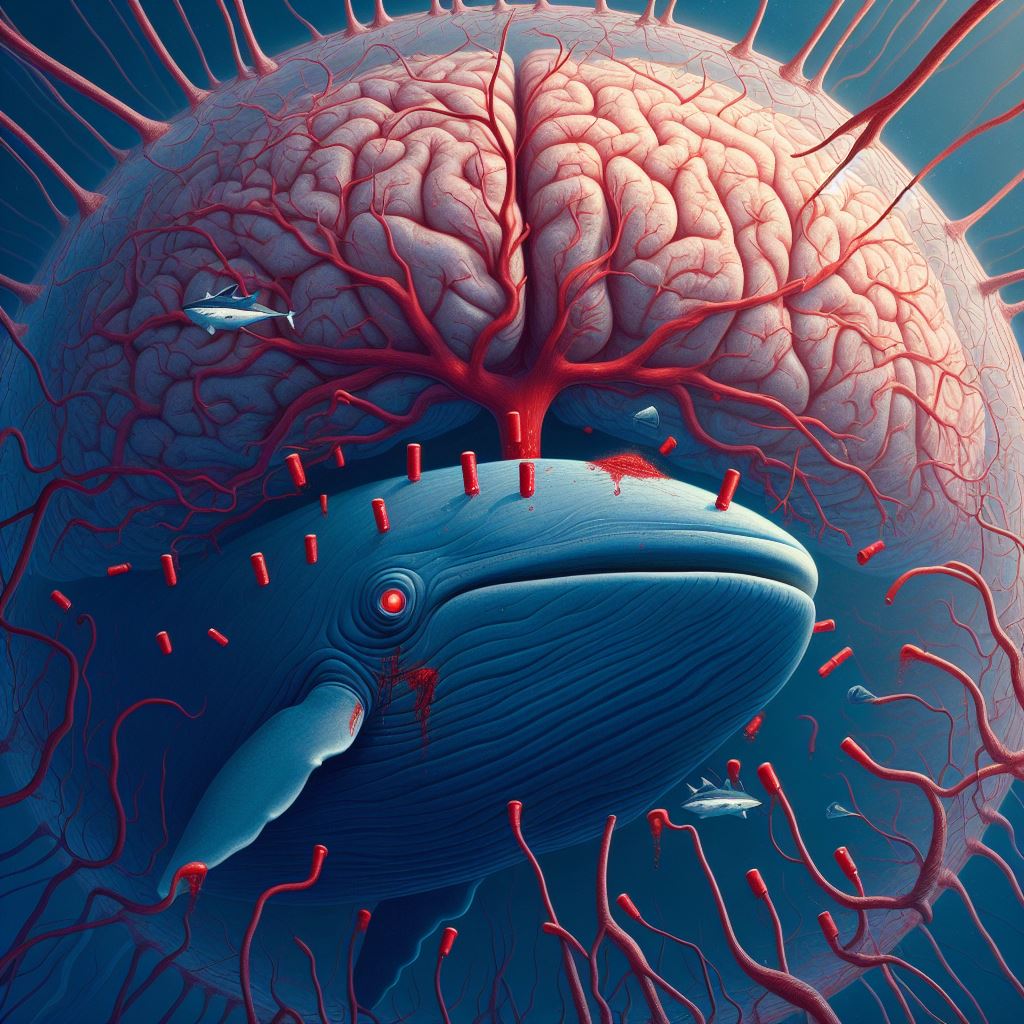
A network of blood vessels in whales’ brains may protect them from powerful pressure pulses generated during swimming.
Whales get around by moving their tails up and down, which, in combination with breath-holding, sends a wave of pressure from the tail to the head. This would typically cause injury to the brain, but whales manage to evade such damage.
“The squeezing actions create pressure pulses which can travel in the blood through veins or arteries,” says Robert Shadwick at the University of British Columbia in Canada. “Unlike a running mammal, [whales] cannot alleviate the locomotion-induced pulses by exhaling air.”
Researchers discovered blood vessel webs known as retia mirabilia in the brains of deep-diving whales in the 1600s. To investigate their function, Shadwick’s team created a model that simulates pressure changes in a whale while swimming, based on the characteristics of 11 cetaceans.
The analysis revealed that retia mirabilia help maintain steady blood pressure in the brain without dampening the pressure pulses or the power of the whale’s tail.
The web of blood vessels reroutes pressure from arteries entering the brain to veins leaving it, protecting the organ from pressure swings without changing how blood moves elsewhere.
“The simulations showed that the retia [mirabilia] could eliminate over 90 percent of the harmful effect of locomotion-induced pulses by this transfer mechanism,” says Shadwick.
The work also helps explain why marine mammals like seals lack Retia mirabilia. They swim via side-to-side undulations, so avoid sending a hazardous pressure pulse to the brain.
